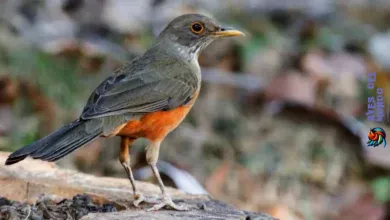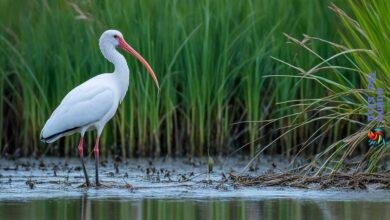If you’re a bird enthusiast or a wildlife photographer, get ready to be amazed. Did you know that the Great Eared Nightjar, a fascinating nocturnal bird species, has been recorded breeding for the first time in the Shendurney Wildlife Sanctuary in Kerala?
This elusive bird, known for its pronounced ear tufts, is one of the five nightjar species found in Kerala and is a favorite among bird watchers and wildlife enthusiasts.

Its mysterious behavior and exceptional camouflage make it incredibly difficult to spot in its natural habitat. But once you catch a glimpse of this magnificent creature, its presence leaves you in awe. In this article, we will delve into the characteristics and behavior of the Great Eared Nightjar, explore its ecological role, and discuss the importance of bird conservation for the preservation of this remarkable bird species.
Characteristics and Behavior of the Great Eared Nightjar
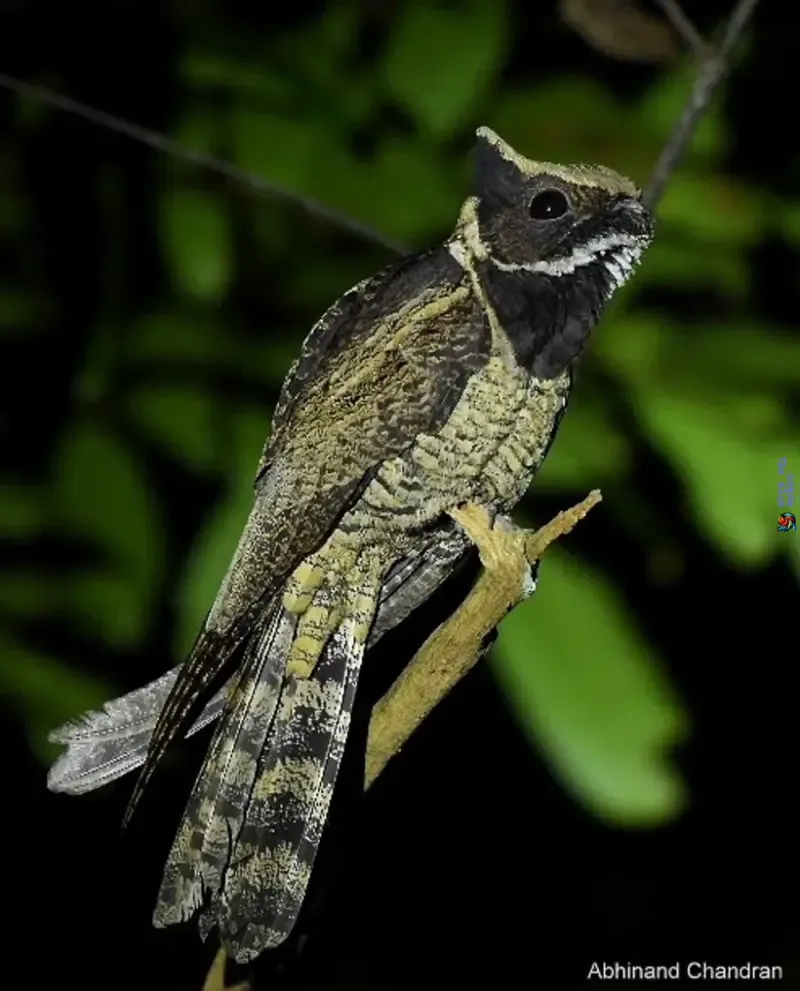
The Great Eared Nightjar is a fascinating nocturnal bird that dwells in the depths of forests. Its exceptional camouflage allows it to seamlessly blend into its natural habitat, making it practically invisible. This elusive bird is primarily active during the night, rarely seen during the day.
The recent breeding record of the Great Eared Nightjar in the Shendurney Wildlife Sanctuary has shed light on its behavior and reproductive patterns. This significant finding adds to our understanding of this remarkable species and its life cycle. A bird survey conducted in the sanctuary has provided valuable information about the presence and abundance of the Great Eared Nightjar in the area.
Camouflage: Nature’s Masterpiece
The Great Eared Nightjar’s camouflage is truly remarkable. Its plumage, with intricate patterns and shades of brown, perfectly matches the forest floor. This ingenious adaptation allows it to blend seamlessly into its surroundings, making it extremely difficult to spot even for experienced observers.
The bird’s cryptic coloration, combined with its habit of perching on branches and remaining motionless during the day, helps it avoid detection from both predators and curious onlookers. Its camouflage serves as the ultimate defense mechanism, allowing the Great Eared Nightjar to remain hidden in plain sight, despite its relatively large size.
Behavior and Breeding
The Great Eared Nightjar’s behavior is predominantly nocturnal. As dusk settles over the forest, it emerges from its concealed roosting spot and takes flight, searching for insects in the dark. The bird’s large eyes and wide gape enable it to catch flying insects on the wing with impressive precision.
During the breeding season, the male Great Eared Nightjar performs aerial displays to attract a mate. These displays involve swooping flights, accompanied by distinctive calls that reverberate through the night. Once a pair has formed, the female lays her eggs on the ground, often in a well-hidden spot amidst the forest undergrowth.
The male assumes the responsibility of incubating the eggs during the day, utilizing its camouflage to protect them from potential threats. At night, the female takes over incubation duties, while the male forages for food to sustain both himself and his mate.
After the eggs hatch, the parents care for the chicks, providing them with insects for nourishment. The young nightjars remain in their camouflaged nest until they are capable of flight, at which point they venture out into the darkness, honing their hunting skills under the guidance of their parents.
Observing the Great Eared Nightjar in its forest habitat is a privilege reserved for the patient and dedicated. Its camouflage mastery, paired with its mysterious nocturnal behavior, adds to its allure and makes encounters with this mesmerizing bird truly unforgettable.
Importance of Bird Conservation for the Great Eared Nightjar
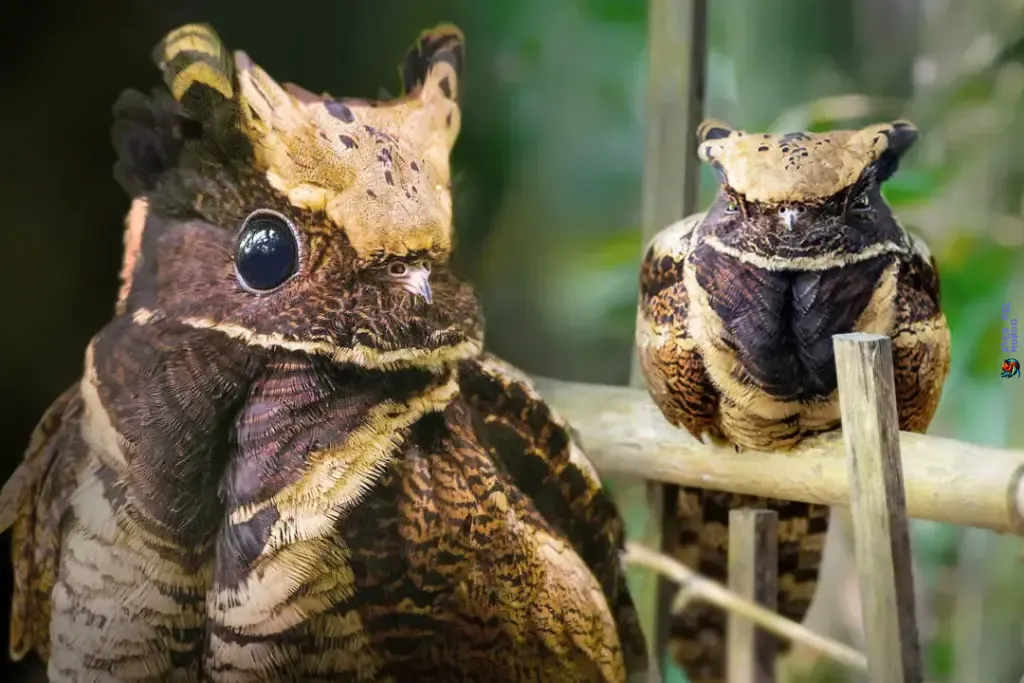
The recording of the breeding of the Great Eared Nightjar in the Shendurney Wildlife Sanctuary highlights the importance of bird conservation efforts. This species, although not considered rare, depends on intact forest habitats for its survival. The presence of breeding individuals indicates a healthy population and a well-preserved habitat. Protecting and preserving wildlife sanctuaries like the Shendurney Wildlife Sanctuary is crucial for the conservation of the Great Eared Nightjar and other bird species.
The Great Eared Nightjar thrives in undisturbed forest ecosystems, relying on the dense vegetation and rich biodiversity for essential resources such as food and nesting sites. With habitat loss being a significant threat to many bird species, safeguarding wildlife sanctuaries becomes paramount.
Conservation efforts focused on bird species, including the Great Eared Nightjar, contribute to maintaining the delicate balance of ecosystems. Birds play a crucial role in pollination, seed dispersal, and insect control, thereby ensuring the overall health and stability of their habitats. Moreover, the presence of diverse bird populations indicates the health and diversity of their ecosystems, making them vital indicators of ecosystem well-being.
Preserving the habitat of the Great Eared Nightjar not only benefits this beautiful bird species but also protects the wider biodiversity of the region. By conserving their habitats, we create a safe haven for other flora and fauna that rely on healthy ecosystems.
Wildlife sanctuaries like the Shendurney Wildlife Sanctuary provide vital protection for endangered species, such as the Great Eared Nightjar, and contribute to their recovery. The establishment and management of these protected areas ensure the long-term preservation of critical habitats and provide a safe refuge for wildlife to thrive.
Effective habitat preservation measures go beyond the boundaries of wildlife sanctuaries, involving collaboration between government agencies, conservation organizations, researchers, and local communities. Inclusive and sustainable approaches to habitat management, such as promoting responsible land use practices and raising awareness about the value of intact ecosystems, are crucial for the long-term survival of the Great Eared Nightjar and other bird species.
Bird conservation efforts not only protect individual species but also contribute to the overall health of ecosystems, ensuring the sustainability of our natural heritage for future generations. By promoting bird conservation and habitat preservation, we can safeguard the Great Eared Nightjar and the invaluable ecological services provided by avian species.
Birdwatching and Wildlife Photography Opportunities
The Great Eared Nightjar is a sought-after species among birdwatchers and wildlife photographers. Its elusive nature and unique characteristics make it a challenge to spot and capture photographs of. However, dedicated birdwatchers and wildlife enthusiasts who are willing to venture out into the nocturnal world of this avian species are rewarded with remarkable sightings and opportunities to document its behavior. The Great Eared Nightjar adds to the allure of birdwatching and wildlife photography, attracting nature enthusiasts from around the world.
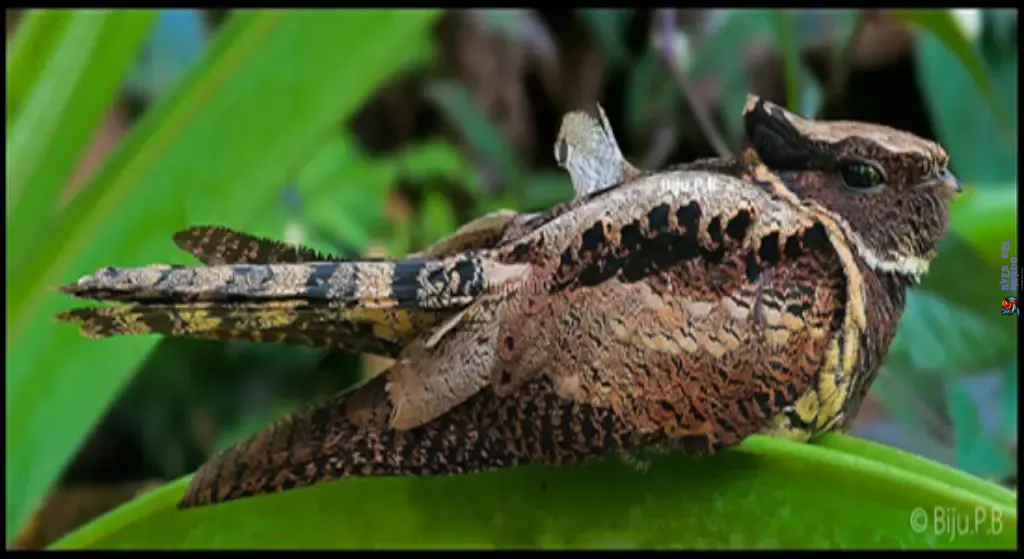
Tips for Birdwatching and Wildlife Photography
- Research the habitat and behavior of the Great Eared Nightjar to increase your chances of spotting it. Consult local birding guides and ornithological resources for valuable insights.
- Visit wildlife sanctuaries, nature reserves, and forests known to be habitats for the Great Eared Nightjar. These protected areas offer ideal conditions for observing and photographing wildlife.
- Enter the field equipped with binoculars, a telephoto lens, and a tripod for stable shots. The Great Eared Nightjar is often far away or perched high in trees, requiring optical equipment to capture clear images.
- Plan your birdwatching or photography session during the twilight hours or after sunset, as this is when the Great Eared Nightjar becomes active.
- Practice patience and remain silent and still while observing the nightjar. This will help minimize disturbance and increase the likelihood of extended sightings and unique behavioral moments.
- Join birdwatching groups or guided tours led by experienced naturalists who can assist in locating the Great Eared Nightjar and provide valuable insights into its ecology and behavior.
- Respect the natural habitat of the bird and adhere to ethical guidelines for wildlife photography, such as avoiding flash photography and maintaining a safe distance to avoid causing stress or harm.
Ornithologists’ Insights into the Great Eared Nightjar
Ornithologists play a crucial role in studying the behavior and ecology of the Great Eared Nightjar. Through their research, they provide valuable insights into the species’ breeding patterns, habitat requirements, and behavior. The recent recording of the breeding of the Great Eared Nightjar in the Shendurney Wildlife Sanctuary is a testament to the importance of ongoing research and monitoring of avian species.
Their contributions enhance our understanding of these fascinating birds and aid in their conservation and management.
The Importance of Ornithology in Understanding the Great Eared Nightjar
Ornithologists dedicate their expertise to studying avian species, including the enigmatic Great Eared Nightjar. Through detailed research and observation, they shed light on various aspects of the species, such as its breeding patterns, habitat preferences, and behavior.
This ornithological research provides valuable data and scientific knowledge, which is essential for the conservation and management of the Great Eared Nightjar.
Research Findings on Breeding Patterns
Ornithologists’ studies have revealed fascinating insights into the breeding patterns of the Great Eared Nightjar. Research conducted in the Shendurney Wildlife Sanctuary has documented the breeding behaviors and rituals of this nocturnal bird. These findings contribute to our understanding of the species’ reproductive strategies and help in identifying critical breeding areas.
Understanding Nocturnal Behavior
Nocturnal birds like the Great Eared Nightjar exhibit unique behaviors that are crucial for their survival. Ornithologists closely observe their activities during the night, unraveling the mysteries of their foraging habits, roosting sites, and communication methods. These findings not only enrich our knowledge of avian behavior but also contribute to the conservation efforts aimed at protecting their nocturnal habitats.
Assessing Habitat Requirements
Through their research, ornithologists determine the specific habitat requirements of the Great Eared Nightjar, including the types of forests it prefers, the availability of suitable roosting sites, and the influence of vegetation structure on its abundance. This information is vital for proper habitat management and conservation planning, as it ensures the protection of key areas and promotes sustainable practices.
Collaboration with Conservation Organizations
Ornithologists often collaborate with conservation organizations to implement effective conservation strategies for the Great Eared Nightjar. By sharing their research findings and expertise, they contribute to the development of targeted conservation actions, such as habitat restoration, predator management, and public awareness campaigns.
Research Insights on the Great Eared Nightjar
| Research Focus | Key Findings |
|---|---|
| Breeding patterns | Identification of breeding behaviors, nesting sites, and mating rituals |
| Nocturnal behavior | Exploration of foraging habits, roosting behaviors, and vocalization patterns during the night |
| Habitat requirements | Assessment of preferred habitat types, vegetation structure, and availability of suitable roosting sites |
| Conservation strategies | Collaboration with conservation organizations to develop targeted conservation actions |
Discovering the Chupacabra: Fact or Myth?
The Chupacabra, a legendary creature in folklore, has captivated the imaginations of many. Its name originates from Spanish, combining «chupa» (suck) and «cabra» (goat), hinting at its supposed preference for blood-sucking goats. However, the existence of the Chupacabra remains a subject of debate—some believe it is a real creature, while others consider it a mythical creation.

According to folklore, the Chupacabra is described as a cryptid creature, known for attacking and draining the blood of livestock, particularly goats. Sightings of this mysterious creature have been reported across different regions, including the Americas and Puerto Rico. Despite these claims, no concrete evidence of the Chupacabra’s existence has been found.
While skeptics argue that the Chupacabra is merely a result of mass hysteria or a product of human imagination, enthusiasts continue to search for clues and evidence. Cryptozoologists, who specialize in the study of unknown or undiscovered creatures, have dedicated their efforts to unravel the mystery behind this elusive creature.
Is the Chupacabra real, or is it merely a myth born out of folklore? The truth remains uncertain, shrouded in a mixture of legends, eyewitness accounts, and speculative theories.
Comparing Chupacabra Sightings
| Region | Sightings |
|---|---|
| Puerto Rico | 75+ |
| Mexico | 40+ |
| United States | 30+ |
| Other Regions | Various |
The Ecological Role of the Great Eared Nightjar
The Great Eared Nightjar, a nocturnal bird species, plays a vital ecological role in its natural habitat. By controlling insect populations, this bird contributes to the overall balance of the ecosystem, thereby promoting forest health and supporting biodiversity.
As a nocturnal bird, the Great Eared Nightjar is uniquely adapted to feed primarily on insects during the night. This feeding behavior helps regulate insect populations, preventing outbreaks that could negatively impact the forest ecosystem. By serving as a natural form of insect control, the Great Eared Nightjar indirectly supports the health and vitality of the entire ecosystem.
- By consuming insects, the Great Eared Nightjar helps maintain the delicate balance of predator-prey relationships in the ecosystem.
- Through its feeding habits, it controls the population sizes of various insect species, preventing overgrazing and reducing the impact of pests on forest vegetation.
- Furthermore, the Great Eared Nightjar’s presence contributes to the resilience of the forest by minimizing the spread of diseases carried by insects.
Understanding and preserving the ecological role of the Great Eared Nightjar is crucial for the conservation and management of this species. By ensuring the protection of its habitat and promoting biodiversity conservation efforts, we can support the overall health and sustainability of forest ecosystems.
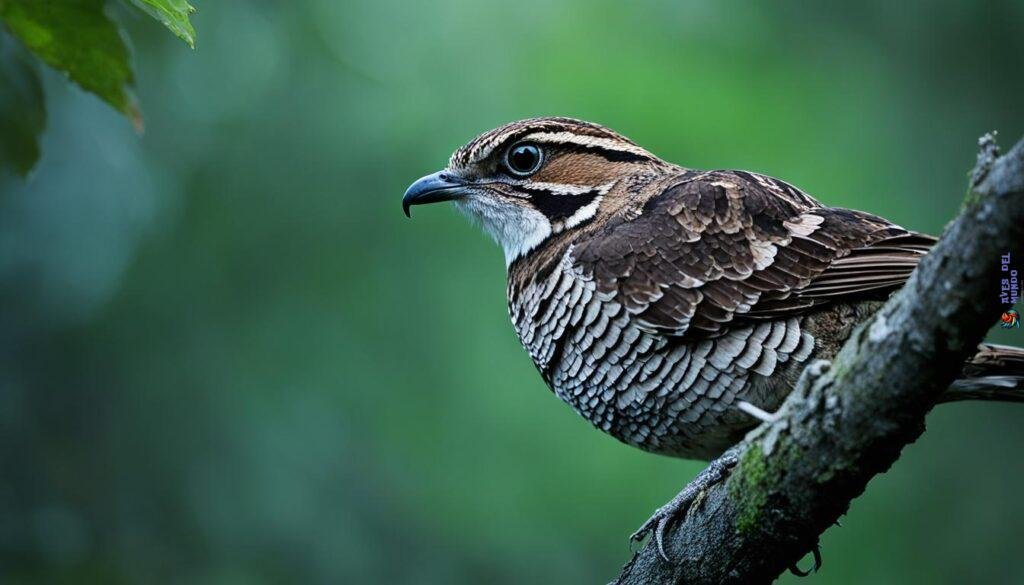
Protecting the Habitat of the Great Eared Nightjar
Protecting the habitat of the Great Eared Nightjar is crucial for the long-term survival of the species. By preserving and managing the forests where the nightjar resides, as well as establishing wildlife sanctuaries and protected areas, we can ensure the conservation of this unique bird species.
To effectively protect the habitat of the Great Eared Nightjar, conservation efforts should focus on promoting sustainable land use practices and preventing habitat destruction. This involves implementing measures to minimize deforestation, land fragmentation, and habitat degradation. By adopting responsible forest management practices, we can create a suitable environment for the Great Eared Nightjar and other wildlife species to thrive.
Establishing wildlife sanctuaries and protected areas specifically dedicated to the conservation of the Great Eared Nightjar is also crucial. These designated areas provide a safe haven for the species, ensuring that their habitat remains undisturbed. Through the creation and management of wildlife sanctuaries, we can ensure the long-term protection of the Great Eared Nightjar and contribute to the overall preservation of forest ecosystems.
Promoting Awareness and Community Engagement
Raising awareness among local communities about the importance of preserving the habitat for the Great Eared Nightjar is essential. By educating people about the ecological role of the bird species and its significance in maintaining the health of the forest ecosystem, we can foster support for habitat conservation efforts.
Community involvement plays a vital role in the success of conservation initiatives. Engaging local communities in the protection of the Great Eared Nightjar’s habitat can lead to increased vigilance against illegal activities, such as logging and poaching. By empowering communities to become stewards of their natural surroundings, we create a sense of ownership and responsibility that strengthens conservation efforts.
Your Role in Conservation
As an individual, you can contribute to the protection of the Great Eared Nightjar and its habitat by supporting organizations and initiatives that focus on habitat conservation and wildlife protection. Additionally, practicing responsible tourism and outdoor activities, such as birdwatching, can help minimize disturbance to the species and its habitat.
By working together, we can secure a future for the Great Eared Nightjar. Let us join hands in our conservation efforts, ensuring that this mysterious forest dweller continues to enchant future generations.
Engaging the Public in Bird Conservation
Engaging the public in bird conservation efforts is crucial for the long-term preservation of the Great Eared Nightjar and other bird species. By raising public awareness about the importance of bird conservation, we can inspire individuals to take action and protect avian habitats. Public education plays a vital role in fostering a sense of responsibility and appreciation for these magnificent creatures.
One effective way to engage the public is through organizing birdwatching and nature appreciation events. These events provide opportunities for people to observe birds in their natural habitats and learn about their behavior and ecological significance. They also serve as a gateway to connect with other nature enthusiasts and foster a sense of community involvement and shared responsibility.
Citizen science initiatives are another powerful tool for involving the public in bird conservation. Through citizen science, individuals can actively contribute to scientific research and data collection, providing valuable insights into bird populations, migration patterns, and habitat requirements. By actively participating in citizen science projects, people feel empowered and directly involved in bird conservation efforts.
Benefits of Engaging the Public in Bird Conservation
- Increased Public Awareness: Educating the public about the importance of bird conservation helps foster a sense of responsibility for protecting avian species and their habitats.
- Community Involvement: Engaging local communities in bird conservation initiatives encourages a sense of ownership and stewardship, leading to long-term commitment and sustainable conservation practices.
- Scientific Contribution: Citizen science initiatives enable the public to actively participate in scientific research, providing valuable data to researchers and enhancing our understanding of bird populations and their conservation needs.
- Education and Appreciation: Birdwatching events and nature appreciation activities allow people to connect with nature, fostering a deeper understanding and appreciation for the beauty and importance of birds in our ecosystems.
Citizen science initiatives and public involvement are key contributors to successful bird conservation efforts. By harnessing the power of education, community involvement, and scientific collaboration, we can work together to preserve the natural habitats of the Great Eared Nightjar and ensure the survival of this magnificent bird species for future generations.
| Ways to Engage the Public in Bird Conservation | Benefits |
|---|---|
| Organize birdwatching and nature appreciation events | Increased public awareness and community involvement |
| Promote citizen science initiatives and data collection | Scientific contribution and education |
The Future of the Great Eared Nightjar
The beautiful and elusive Great Eared Nightjar is a species that requires our collective efforts to ensure its long-term survival. Through continued research, monitoring, habitat management, and conservation initiatives, we can preserve this remarkable bird and protect its habitat.
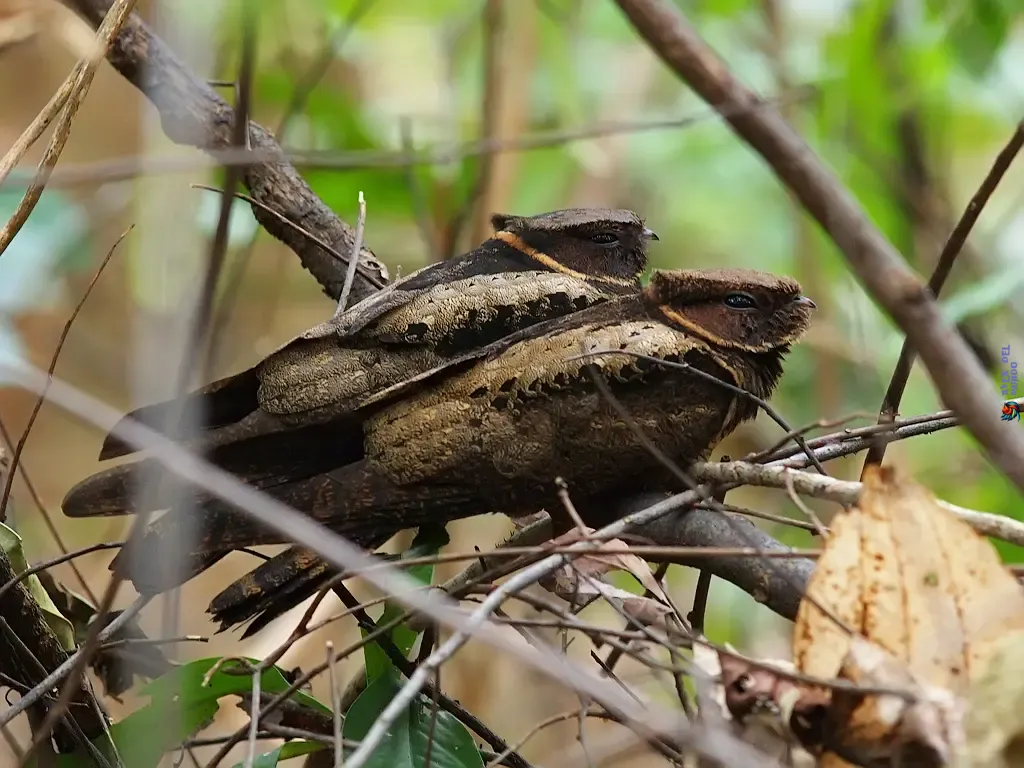
Research plays a vital role in enhancing our understanding of the Great Eared Nightjar’s behavior, breeding patterns, and ecological needs. By studying this species, we can gather valuable insights that inform conservation strategies and guide our efforts towards preserving its population.
In addition to research, effective habitat management is essential for the Great Eared Nightjar’s survival. Protecting and preserving the forested areas that serve as its habitat is crucial. By implementing sustainable land-use practices and raising awareness about the importance of habitat conservation, we can provide a safe haven for the Great Eared Nightjar and ensure the preservation of its natural habitat.
However, conservation efforts cannot be successful without the involvement of the general public. By recognizing the importance of species preservation and supporting initiatives that aim to protect the Great Eared Nightjar, we can contribute to its long-term survival. Together, we can safeguard the biodiversity of our forests and ensure that future generations have the opportunity to marvel at the mystery and beauty of this extraordinary bird.
